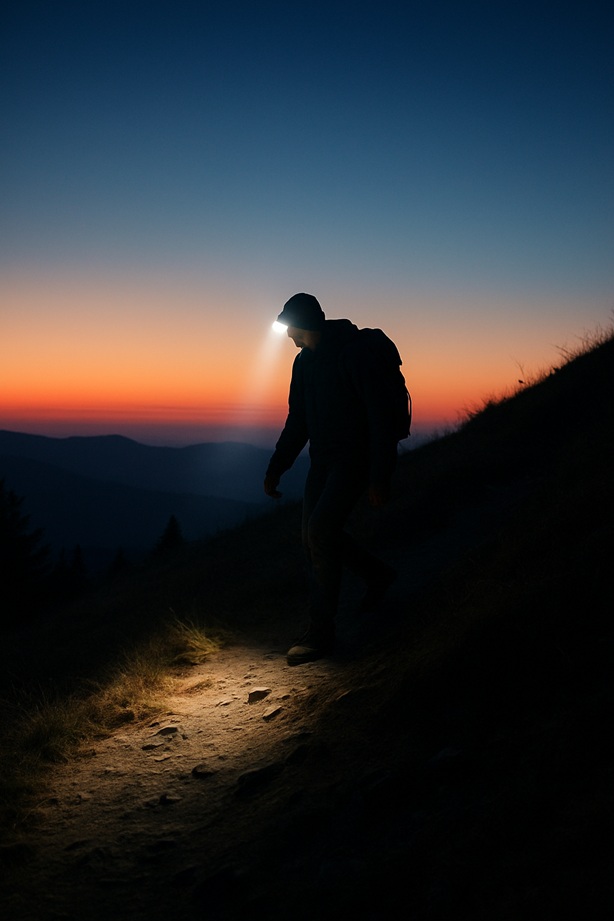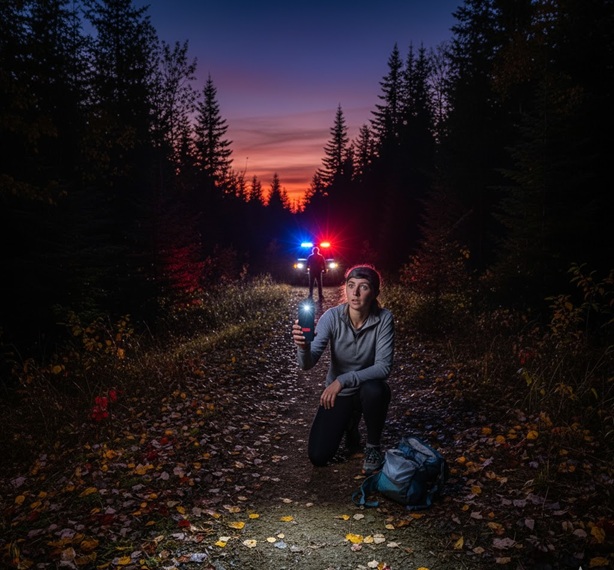The shift is here. Since the summer solstice, our daylight has been steadily retreating and since the fall equinox, the night has officially been winning the tug-of-war. But when the clocks “fall back” for Daylight Saving Time, we experience a sudden, massive jump: the sun now sets a whole hour earlier than it did the day before.
Technically, in the astronomical sense, the sun sets exactly when it’s supposed to, but to your internal clock and to your car’s clock and to the annoying nightstand clock radio, the sunset has been abruptly reframed. Our measuring stick for time moved backward by an hour and suddenly dusk arrives like someone flipped a switch.
There’s a natural, lingering appeal to being out later, enjoying the crisp autumn air and the last vestiges of the day. However, this is the time of year when sunsets come fast and that earlier-feeling darkness is not just a nuisance. It’s a safety hazard. People recreating in the wilderness are statistically more likely to get stranded outdoors because they haven’t adjusted their perception to the dramatically earlier nightfall.
What felt like a comfortable afternoon hike last week can become a surprise night operation this week. And this time of year, that surprise happens a lot.

The Scariest Thing This Season
Forget the costumes, the ghouls and the ghost stories of Halloween. The scariest thing this season is being caught unprepared after dark.
There’s a certain charm to late-day adventures: the warm afternoon light, fewer crowds and cooler temperatures, but early winter sunsets are deceptive.
For hikers, climbers, runners and all outdoor enthusiasts, this time of year demands a mental shift. A trail you know well in summer daylight can become confusing and hazardous in the sudden darkness. Before you know it, the world goes dim, shadows stretch across the trail, temperatures drop and what was a scenic hike becomes a navigational challenge. When footing becomes uncertain, your risk of a simple navigation error or a twist of the ankle skyrockets.
This is when search and rescue teams see a bump in calls, not because people made catastrophic mistakes, but because they misjudged the shrinking daylight by just a little. And that “little” is exactly where your extra minute matters.
This is where the #TakeTheExtraMinute campaign becomes absolutely vital. You don’t need hours of planning. You need one crucial minute of foresight.

Dusk Safety Checklist: Take the Extra Minute
Before you leave the trailhead or your camp, #TakeTheExtraMinute to ask yourself these questions:
- Check Your Clock (and the Sun!): What is the exact official sunset time for your location today? And what time do you need to start your return trip to be back at your car before that time? Establish a non-negotiable turnaround time and stick to it.
- Lights On: Check your headlamp batteries. Is your spare set also packed? A phone flashlight is not a sufficient substitute for a dedicated headlamp on a trail.
- Visibility: Do you have extra layers of bright or reflective clothing? Even if you’re not planning to be out past dark, being visible to others (and to rescuers in particular) is critical. Don’t camouflage yourself like the rocks around you.
- Navigation Check: Take a quick minute to review your route on your map or GPS device. Knowing exactly where you are when the light fades is key.
- Weather Check: Cloudy days get dark even earlier. Storms make twilight vanish. And it does not take much snow to obscure the trail any time of day.

Headlamps Beat Headlights Every Time
No one wants a rescue vehicle to be the first light you see.
There’s a special kind of dread that creeps in when the forest goes quiet, the trail disappears and the only light left in your life is the faint glow of your phone battery dipping into the single digits. You tell yourself you’re fine. You insist you “know this trail”. You wave your phone around like a desperate lighthouse keeper, hoping the beam will magically widen.
And then, just when your night vision is giving up on you, you spot lights. Big, bright, unmistakable headlights. Except they’re not trail magic. They’re your local search and rescue team, parking at the trailhead because someone (probably you) didn’t pack a headlamp.
Most people don’t plan to be out after dark. But the dark doesn’t wait for permission. Trails take longer than expected. Photos take more time than you thought. A junction gets missed. The dog gets distracted by a squirrel seminar in the bushes. Suddenly, day becomes dusk, dusk becomes oops and oops becomes a rescue call.
The headlamp rule is simple. If you wouldn’t leave the house without your keys, you shouldn’t leave the trailhead without your light. Because at the end of the day, or more accurately, after the end of the day, your headlamp should be the first light you rely on, not ours.

Final Thought
Darkness isn’t the enemy. Surprise is. This season, let’s make sure the sun isn’t the one catching you off guard.
So before you head out, pause.
Breathe.
And #TakeTheExtraMinute before the dark falls.
Your future well-lit self will thank you.
Enjoy the beauty of the season, but respect the darkness. A few minutes of preparation is all it takes to keep your adventure safe and fun!
Discover more from Tales of Many Things
Subscribe to get the latest posts sent to your email.
